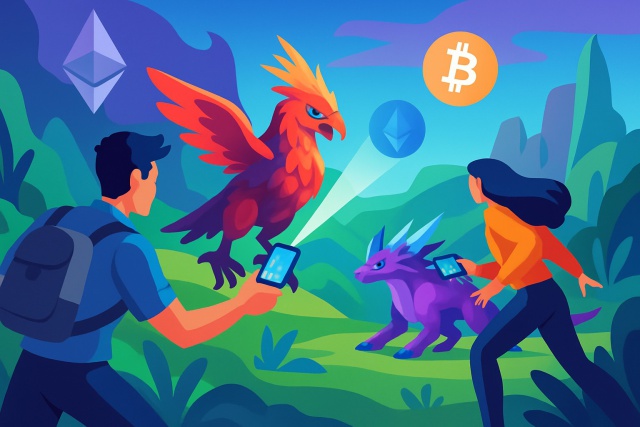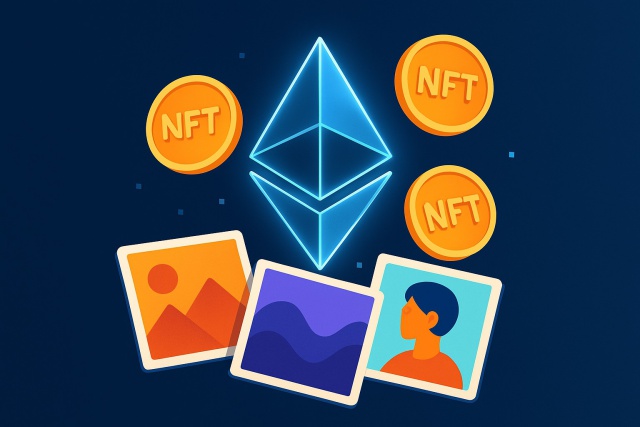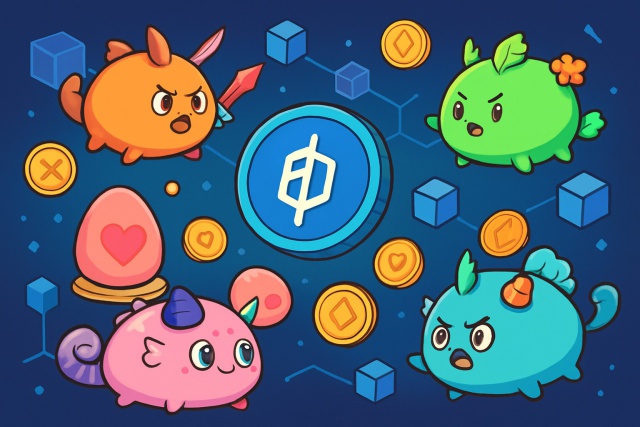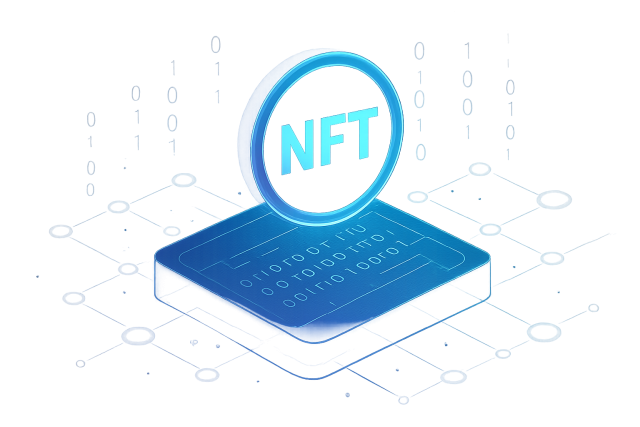NFT Investing Guide for Smart Portfolio Building

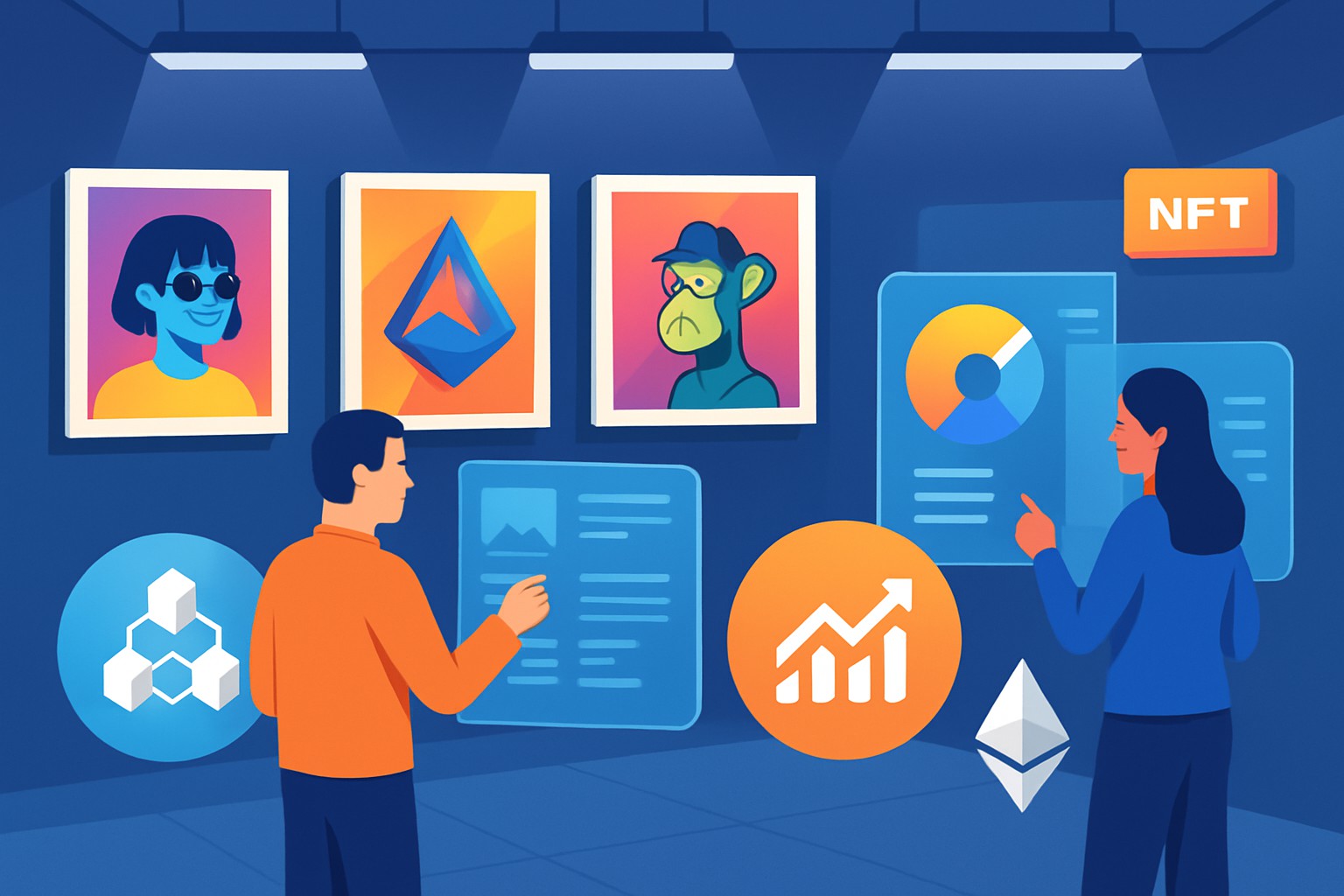
Non-fungible tokens (NFTs) have swiftly captured the spotlight as groundbreaking digital assets in this NFT investing guide, blending art, technology and finance in a fresh and exciting way. Unlike usual investments, NFTs represent unique digital property securely recorded on blockchains. They open a new world of opportunities for investors eager to diversify their portfolios.
Understanding NFTs as the Foundation for Your NFT Investing Guide
NFTs are unique digital tokens etched onto blockchain networks that prove you truly own a specific asset. Mostly powered by Ethereum and other smart contract platforms, NFTs differ from regular cryptocurrencies because they represent unique one-of-a-kind items like digital art or collectibles or utility tokens.
- NFTs are unique digital tokens that act like a digital certificate of ownership and prove you hold exclusive rights to an asset on a blockchain.
- Blockchain technology is the reliable ledger that keeps everything transparent and ensures NFT transactions and their history stay locked in place without any funny business.
- Minting is the fancy term for creating a brand-new NFT and adding it to the blockchain’s record book.
- Wallets like MetaMask do more than just hold your NFTs. They are your gateway to marketplaces and decentralized apps, kind of like a digital Swiss Army knife.
- NFTs come in many forms from digital art and collectibles to gaming goodies and stand-ins for real-world items.
- Marketplaces such as OpenSea, Rarible and Foundation are bustling bazaars where you can buy, sell or auction NFTs. Think of it as the digital equivalent of a lively marketplace haggling session.
Defining Your Investment Goals and Getting a Good Grip on Your Risk Profile
Set some clear financial goals and really understand your own appetite for risk. NFT investing can be pretty wild—think rollercoaster rather than merry-go-round—and usually plays best as just one piece of a well-rounded, diversified portfolio.
Take a good, hard look at your overall financial picture to figure out how much you can comfortably invest in NFTs without putting your essentials on the line. It’s all about balance here.
Whether you aim for quick flips to grab some fast wins or plan to hold tight for the long haul, prepare for your chosen strategy.
Weigh the rollercoaster ride of NFTs against the potential upsides. Spoiler: it can get bumpy, so buckle up.
Decide what slice of your total portfolio you want to park in NFTs. It’s usually smart to keep it reasonable and avoid putting all your eggs in one digital basket.
Keep in mind how quickly you might need to sell, since NFTs can be a bit less liquid compared to stocks or cryptocurrencies. Don’t be caught off guard if your digital asset takes its sweet time finding a new owner.
Diving into and Sizing Up NFT Projects
Careful due diligence is vital in the world of NFT investing, especially with the hype and risk of scams. It’s wise to check the credibility of the creators, see how open they are about their project, check the activity within the community, and weigh the real potential for utility or growth.
- The artist's or creator's background and reputation usually give you a good clue about how trustworthy the project might be—after all, track records don’t lie.
- Clear communication and well-defined roadmaps tend to reveal the project's legitimacy and let you know what’s coming down the pipeline without surprises.
- Unique traits and proven scarcity often play a big role in how much the value could climb though nothing’s set in stone.
- An active buzzing community often signals ongoing interest and solid support and can be a real comfort to anyone involved.
- Features like game integration, special access rights or DeFi functions add practical usefulness that goes beyond the basics and makes things more exciting.
- Taking a peek at past price trends and trading volumes can give you a decent sense of market acceptance and stability—kind of like reading the room before jumping in.
Building a Smart NFT Portfolio with a Dash of Diversification and a Crystal-Clear Strategy
Building an NFT portfolio is about striking the right balance between risks and potential rewards, like juggling while riding a unicycle—tricky but doable. It’s smart to spread your investments across various NFT categories and sectors. I have found that mixing blue-chip collectibles with pieces from emerging artists, game assets and metaverse parcels helps manage your exposure and maximize growth opportunities.
Spread your investments across different NFT categories like art, collectibles, gaming assets and virtual real estate to catch the wave of trends in each corner of the market. It’s kind of like not putting all your eggs in one basket but with pixels and proof of ownership.
Strike a balance between those high-risk projects that could skyrocket your returns and the more stable blue-chip NFTs that’ve proven their worth over time. A little thrill mixed with some sensible groundwork usually does the trick.
Reinvest your earnings into promising projects or use that cash to add more variety to your portfolio.
Keep a sharp eye on market trends, the buzz in the community and tech developments that might shake up NFT values. Staying informed is half the battle and it can save you from nasty surprises.
Regularly tweak your portfolio to avoid going overboard on any single asset and to lock in profits from NFTs that have climbed in value. Think of it as fine-tuning your collection to keep it just right.

Practical Tips for Buying and Selling NFTs (That Might Just Save You a Headache)
Buying NFTs usually involves a handful of key steps: picking and funding a cryptocurrency wallet, connecting it to a marketplace, carefully checking NFT listings and wrapping up transactions securely.
Pick a reliable crypto wallet that works with the blockchain of your choice—think MetaMask or Coinbase Wallet which are solid bets.
Load your wallet with enough cryptocurrency, usually Ethereum, to cover what you are buying and transaction fees.
Head over to a reputable NFT marketplace like OpenSea, Rarible or LooksRare where things tend to be above board.
Give the NFT listing a good once-over: check the price history, past owners and what makes it stand out in rarity.
When you are ready, confidently complete your purchase or place a bid by following the marketplace steps. Don’t forget to confirm the transaction on the blockchain, it’s like sealing the deal but digital.
Keep your precious NFTs safely tucked away and consider extra protection like insurance or a hardware wallet because nobody wants their treasure lost.
Managing Risks by Steering Clear of Common NFT Investment Pitfalls
NFT markets come with their own quirks and risks including scams that can catch you off guard and sudden price swings that might make your head spin. They also have the nagging problem of low liquidity.
- Rug pulls are when creators make off with the funds and leave the whole project high and dry, leaving holders stuck with NFTs that basically end up gathering digital dust.
- Some projects turn out to be outright fakes or cheap knockoffs, designed to fool hopeful buyers chasing after rare or highly sought-after assets.
- Market manipulation can whip prices into wild swings that don’t actually represent what the NFTs are worth in other words, don’t always trust the rollercoaster.
- A lot of NFTs lack real utility or any lasting value beyond the initial hype and speculation frenzy that surrounds them.
- Poor security is a recipe for disaster, often leading to theft or loss when wallets get compromised kind of like leaving your front door wide open.
- Holding out for quick profits with unrealistic expectations often sets people up for some pretty painful investment mistakes.
"Given just how wildly unpredictable the NFT market tends to be, playing it safe by being cautious and thorough isn’t simply smart—it’s downright essential. Having a solid grasp of the risks and double-checking every little detail can genuinely save your investments from some painfully expensive slip-ups." — Renowned NFT Analyst
Tracking Reporting and Tax Considerations for NFT Investments
Keeping a close eye on your NFT portfolio’s performance and having a solid grasp of the tax rules is key for responsible investing. It’s a good idea to track your transactions meticulously and lean on handy tools to keep tabs on your portfolio. Stay sharp about taxable events like sales or trades—this way, you won’t just stay compliant but also squeeze the most out of your returns.
| Taxable Event | Description | Reporting Requirement | Examples |
|---|---|---|---|
| NFT Purchase | Usually not taxable, but it’s wise to keep a close eye on your cost basis for later | Keep thorough records to track any future capital gains | Buying digital art using ETH |
| NFT Sale | The taxable capital gain or loss is basically the sale price minus what you originally paid | Don’t forget to include this on your tax returns | Selling an NFT collectible at a profit |
| NFT Trade | Trading NFTs can trigger taxable events if the values shift during the swap | Report these transactions as barter deals | Swapping one NFT for another NFT or cryptocurrency |
| NFT Minting | Generally not taxable unless you turn around and sell the NFT right away | Keep detailed records of any costs and proceeds for your taxes | Creating a new NFT and putting it up for sale |
| NFT Airdrops or Gifts | These might have tax implications depending on your local laws | Report as income or gift tax where it applies | Receiving NFTs as promotional giveaways or gifts |
| NFT Rental/Utility | Income earned from leasing or using NFTs for utility purposes | Make sure to declare this as income | Renting out metaverse land NFTs to earn some passive income |
What’s Next for NFT Investing and How to Stay One Step Ahead
The NFT space is evolving at a breakneck pace, making this NFT investing guide essential as trends like DeFi integration and better utilities shake things up. There is also a growing wave of institutional interest.
- NFT staking lets holders earn a bit of passive income by locking their assets into protocols, sort of like putting your money to work while you kick back.
- Fractional ownership makes it possible for investors to buy shares of high-value NFTs, so you don’t have to break the bank to get a slice of the action.
- Cross-chain interoperability is breaking down walls, allowing NFTs to roam freely across different blockchain networks.
- The rise in institutional adoption is lending some much-needed stability and giving the market a nod of approval.
- Clearer regulatory frameworks are slowly but surely taking shape, aiming to guide investors safely through the compliance maze.
- NFTs are opening up fascinating new doors for art and ownership models, proving that the future can be pretty creative and a little bit wild.


